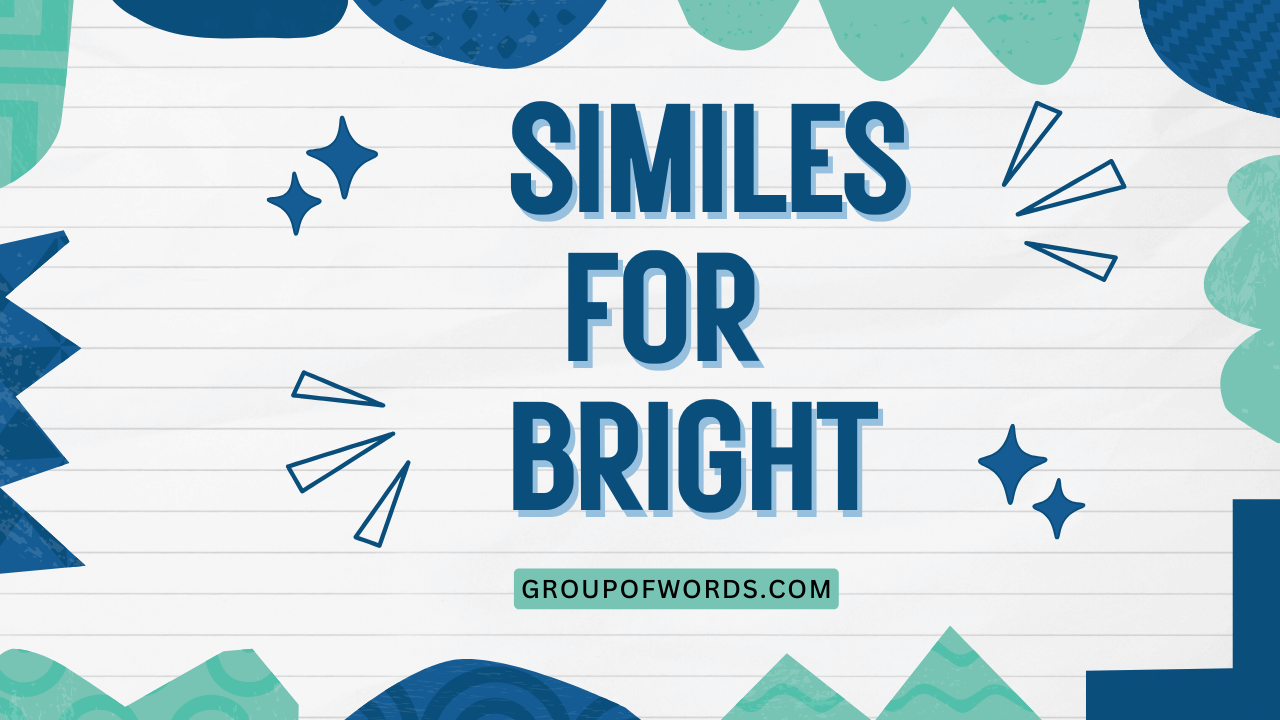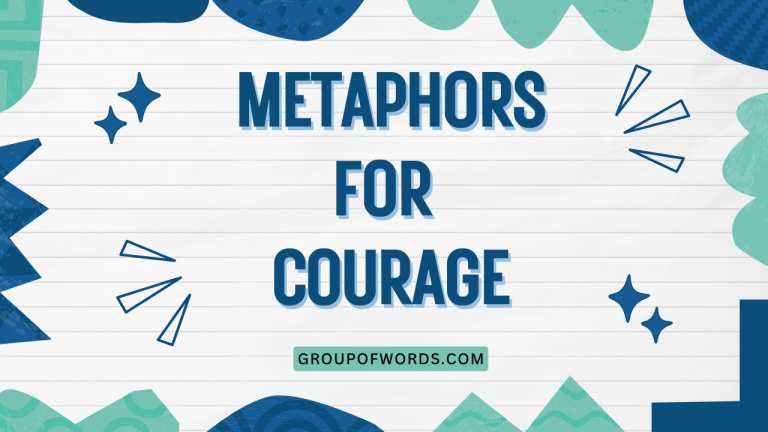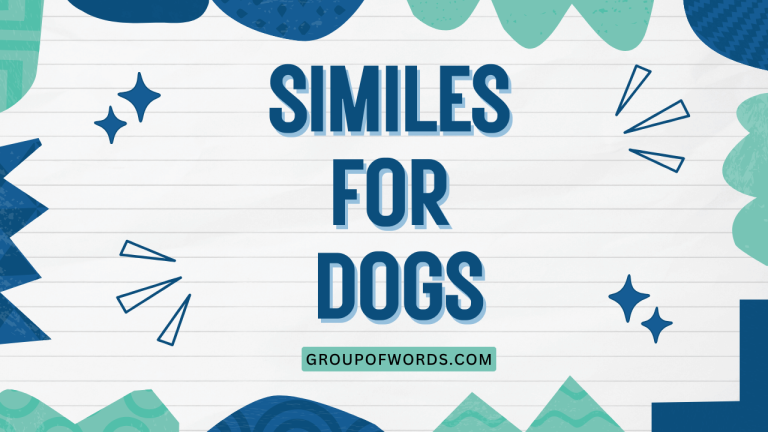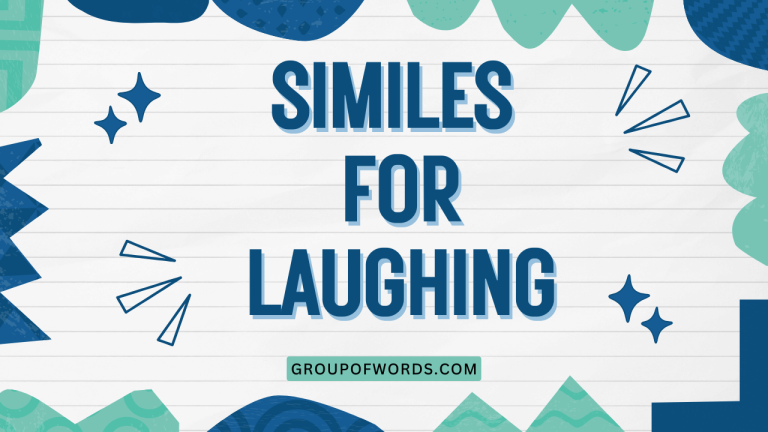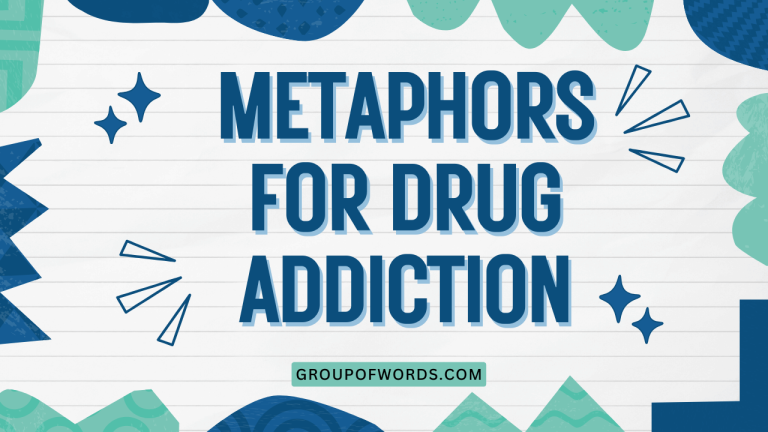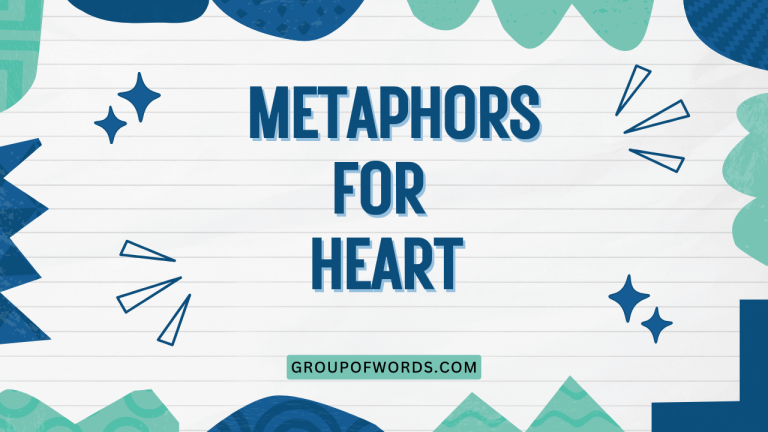Shine On: Mastering Similes for Brightness in English
Similes are powerful tools in the English language, allowing us to create vivid and memorable descriptions by comparing one thing to another. When it comes to describing brightness, similes can elevate your writing from simply stating something is “bright” to painting a picture in the reader’s mind.
This article will delve into the art of crafting effective similes for brightness, exploring various options, their nuances, and how to use them to enhance your communication. Whether you’re a student, writer, or simply someone looking to improve their English, this guide will provide you with the knowledge and practice you need to master similes for brightness.
This comprehensive guide will cover the definition of similes, their structure, and various examples categorized by the specific type of brightness they describe. We will also explore common mistakes, provide practice exercises, and answer frequently asked questions, ensuring you have a solid understanding of this important aspect of English grammar and figurative language.
Table of Contents
- Definition of Similes
- Structural Breakdown of Similes
- Types of Brightness and Corresponding Similes
- Examples of Similes for Brightness
- Usage Rules for Similes
- Common Mistakes with Similes
- Practice Exercises
- Advanced Topics in Similes
- Frequently Asked Questions
- Conclusion
Definition of Similes
A simile is a figure of speech that directly compares two different things using the words “like” or “as.” It is a powerful tool for making descriptions more vivid and relatable. Unlike a metaphor, which implies that one thing is another, a simile explicitly states the comparison. Similes are used extensively in literature, poetry, and everyday conversation to add depth and imagery to language.
The primary function of a simile is to enhance understanding or create a specific effect by drawing parallels between the subject and something familiar to the audience. By using similes effectively, writers and speakers can make their message more engaging and memorable.
Structural Breakdown of Similes
The basic structure of a simile includes three key components: the subject being described, the comparison word (“like” or “as”), and the object or idea to which the subject is being compared. Understanding this structure is crucial for constructing effective and clear similes.
The general formula for a simile can be represented as follows:
Subject + Comparison Word (like/as) + Object/Idea
For example, in the simile “The sun is like a giant spotlight,” the subject is “the sun,” the comparison word is “like,” and the object is “a giant spotlight.” This structure allows for a direct and easily understandable comparison. It’s important to choose objects or ideas that share a clear similarity with the subject to make the simile effective.
A weak or illogical comparison can confuse the reader and diminish the impact of the simile.
Types of Brightness and Corresponding Similes
Brightness can refer to various qualities, including literal light, intelligence, color vibrancy, and emotional state. Each type of brightness lends itself to different kinds of similes.
Let’s explore these categories.
Describing Light
When describing light, similes often focus on the intensity, color, or source of the light. Common comparisons involve the sun, stars, lamps, and other bright objects.
The goal is to evoke a sense of illumination and clarity. For instance, you might say, “The moon was as bright as a silver coin” to convey a sense of gentle, reflective light.
Describing Intelligence
In the context of intelligence, “bright” suggests quick-wittedness, cleverness, and mental acuity. Similes used to describe intelligence may compare someone’s mind to a sharp tool, a fast computer, or a clear sky, highlighting their mental sharpness and clarity of thought.
An example would be, “Her mind was as sharp as a razor,” indicating her exceptional intelligence.
Describing Colors
When describing colors, “bright” refers to vibrancy, saturation, and intensity. Similes can compare colors to jewels, flowers, or other naturally vivid objects to emphasize their brilliance and richness.
For example, “The ruby was as bright as a drop of blood” emphasizes the deep red color of the gem.
Describing Emotions
In the realm of emotions, “bright” often describes happiness, optimism, and enthusiasm. Similes can compare these positive emotions to sunshine, fireworks, or other joyful experiences to convey a sense of upliftment and energy.
For instance, “Her smile was as bright as the morning sun” conveys her happiness and warmth.
Examples of Similes for Brightness
This section provides numerous examples of similes for brightness, categorized by the specific type of brightness they describe. These examples will help you understand the versatility of similes and how they can be used in different contexts.
Examples for Describing Light
The following table provides examples of similes used to describe different aspects of light, such as intensity, color, and source. Each simile aims to create a vivid image in the reader’s mind.
The table below showcases a range of similes that vividly describe light, covering various intensities and qualities. Such similes can bring clarity and detail to written descriptions.
| Simile | Explanation |
|---|---|
| The sun was as bright as a furnace. | Emphasizes intense heat and light. |
| The stars shone like diamonds in the sky. | Highlights the sparkling, brilliant quality of stars. |
| The moon was as bright as a silver coin. | Suggests a gentle, reflective light. |
| The lighthouse beam cut through the darkness like a knife. | Conveys the sharp, focused quality of the light. |
| The streetlights glowed like golden orbs. | Describes the warm, radiant light of streetlights. |
| Her eyes were as bright as headlamps in the dark. | Suggests an intense, piercing gaze. |
| The fireflies twinkled like tiny stars. | Emphasizes the small, flickering light of fireflies. |
| The lamp shone as bright as a spotlight. | Highlights the focused, intense nature of the light. |
| The sunrise was like a burst of golden energy. | Conveys the vibrant, uplifting quality of a sunrise. |
| The candlelight flickered like a nervous flame. | Suggests a delicate, unsteady light. |
| His smile was as bright as a flashbulb. | Indicates a sudden, radiant expression. |
| The illuminated sign was as bright as day. | Highlights the clarity and intensity of the light. |
| The porch light shone like a beacon in the night. | Suggests a guiding, protective light. |
| The stadium lights blazed like a thousand suns. | Conveys the overwhelming brightness of stadium lights. |
| The headlight cut through the fog like a laser beam. | Emphasizes the focused, penetrating quality of the light. |
| The Christmas tree lights twinkled like a constellation. | Suggests a festive, sparkling light. |
| The sun glared as bright as a welder’s torch. | Highlights the intense, potentially harmful brightness. |
| The lantern glowed like a warm ember in the cold night. | Suggests a comforting, gentle light. |
| The neon sign pulsed as bright as a beating heart. | Conveys a vibrant, energetic light. |
| The stage lights illuminated the performer like an angel. | Suggests a divine, ethereal light. |
| The glow-worms shone as bright as miniature LEDs. | Highlights the tiny yet noticeable light of glow-worms. |
| The bonfire roared, casting light as bright as noon. | Conveys the expansive and powerful light from a large fire. |
| The emergency flares burned as bright as magnesium strips. | Emphasizes the intense, attention-grabbing light of flares. |
| The reflection off the lake shimmered like a thousand tiny suns. | Suggests a dazzling, fragmented light. |
| The fireworks exploded in the sky as bright as momentary stars. | Highlights the fleeting, spectacular light of fireworks. |
Examples for Describing Intelligence
The following table provides examples of similes used to describe intelligence, focusing on sharpness, quickness, and clarity of thought. These similes help to convey the level and nature of someone’s mental abilities.
The similes below describe intelligence, showcasing diverse ways to convey mental sharpness and understanding. These examples add depth to character descriptions.
| Simile | Explanation |
|---|---|
| Her mind was as sharp as a razor. | Indicates exceptional intelligence and quick thinking. |
| His intellect shone like a beacon. | Suggests that his intelligence is obvious and guiding. |
| Her thoughts flowed like a clear, bright stream. | Conveys clarity and ease of understanding. |
| His wit was as quick as lightning. | Highlights his fast and clever responses. |
| Her brain worked like a well-oiled machine. | Suggests efficiency and precision in thought. |
| His insights were as bright as revelations. | Emphasizes the profound and illuminating nature of his ideas. |
| Her understanding was as clear as crystal. | Conveys perfect clarity and comprehension. |
| His knowledge was like a vast, illuminated library. | Suggests extensive and readily accessible information. |
| Her arguments were as sharp as arrows. | Highlights the directness and accuracy of her logic. |
| His intelligence sparkled like a gem. | Conveys brilliance and preciousness of his intellect. |
| Her mind was as quick as a computer. | Indicates fast processing and problem-solving abilities. |
| His ideas were as bright as stars in the night. | Suggests innovative and inspiring thoughts. |
| Her understanding was like a light bulb turning on. | Conveys a sudden and clear realization. |
| His reasoning was as precise as a laser. | Highlights the accuracy and focus of his logic. |
| Her mind was as agile as a gymnast. | Suggests flexibility and adaptability in thinking. |
| His thoughts were as clear as a cloudless sky. | Conveys clarity and lack of confusion. |
| Her intellect was as radiant as the sun. | Emphasizes the illuminating and influential nature of her mind. |
| His insights were as sharp as a surgeon’s scalpel. | Highlights the precision and effectiveness of his analysis. |
| Her mind operated like a finely tuned instrument. | Suggests sophistication and precision in thought processes. |
| His intelligence was as bright as a supernova. | Indicates an explosive and extraordinary intellect. |
| Her thoughts were as organized as a well-indexed book. | Conveys structure and easy accessibility of her knowledge. |
| His understanding was as expansive as the universe. | Highlights the vastness and depth of his comprehension. |
| Her mind was as quick as a hummingbird’s wings. | Suggests rapid and agile thinking. |
| His intellect was as clear as a perfectly cut diamond. | Emphasizes the sharpness and clarity of his mind. |
Examples for Describing Colors
The following table provides examples of similes used to describe bright colors, focusing on their vibrancy, intensity, and richness. These similes draw comparisons with naturally colorful objects and phenomena.
The table below lists similes to describe vivid colors. These examples use familiar objects to evoke the intensity and hue of each color.
| Simile | Explanation |
|---|---|
| The ruby was as bright as a drop of blood. | Emphasizes the deep red color of the gem. |
| The sunflower was as yellow as the sun. | Highlights the vibrant yellow color of the flower. |
| The emerald was as green as a lush forest. | Conveys the rich green color of the gem. |
| The sapphire was as blue as the summer sky. | Suggests the clear, bright blue color of the gem. |
| The sunset was as orange as a ripe mango. | Highlights the warm, vibrant orange color of the sky. |
| The lavender field was as purple as royal robes. | Emphasizes the rich purple color of the flowers. |
| The coral was as pink as a flamingo’s feathers. | Conveys the bright pink color of the coral. |
| The gold was as bright as a newly minted coin. | Highlights the shiny, vibrant color of the metal. |
| The leaves were as red as a cardinal’s plumage. | Suggests a deep, vibrant red color. |
| The ocean was as turquoise as a tropical lagoon. | Emphasizes the bright blue-green color of the water. |
| The paint was as bright as a clown’s makeup. | Highlights the vibrant and exaggerated colors. |
| The fruit was as green as an unripe apple. | Conveys a fresh, vibrant green color. |
| The fabric was as blue as a peacock’s feathers. | Suggests a rich, iridescent blue color. |
| The dye was as purple as grape juice. | Highlights a deep, saturated purple color. |
| The flower was as pink as bubblegum. | Emphasizes a bright, cheerful pink color. |
| The car was as red as a fire engine. | Conveys a bold and attention-grabbing red. |
| The lemonade was as yellow as a lemon. | Highlights a bright and tangy yellow color. |
| The grass was as green as a freshly cut lawn. | Suggests a vibrant and healthy green color. |
| The banner was as orange as a traffic cone. | Emphasizes a bright, warning orange color. |
| The scarf was as violet as an amethyst. | Highlights the deep and rich purple color. |
| The dress was as magenta as a fuchsia flower. | Conveys a vibrant, reddish-purple color. |
| The cake was as golden as honey. | Suggests a warm and inviting yellow-gold color. |
| The curtains were as teal as the ocean depths. | Emphasizes a deep blue-green color. |
| The poster was as lime as a citrus fruit. | Highlights a bright and zesty green color. |
Examples for Describing Emotions
The following table provides examples of similes used to describe bright emotions, such as happiness, optimism, and enthusiasm. These similes draw comparisons with joyful and uplifting experiences.
The table presents similes that describe bright emotions, using comparisons to cheerful and uplifting experiences to convey feelings of happiness and optimism.
| Simile | Explanation |
|---|---|
| Her smile was as bright as the morning sun. | Conveys her happiness and warmth. |
| His laughter was like a burst of sunshine. | Suggests joy and energy. |
| Her eyes sparkled like stars with excitement. | Emphasizes her enthusiasm. |
| His optimism shone like a beacon in the darkness. | Highlights his positive outlook. |
| Her joy was as radiant as a summer day. | Conveys intense happiness and warmth. |
| His enthusiasm bubbled like a fizzy drink. | Suggests excitement and energy. |
| Her spirit was as bright as a flame. | Emphasizes her passion and energy. |
| His happiness spread like wildfire. | Conveys the contagious nature of his joy. |
| Her excitement was as palpable as electricity. | Highlights the intensity of her feelings. |
| His mood was as bright as a clear blue sky. | Suggests a light and cheerful disposition. |
| Her laughter rang out like joyful bells. | Conveys a pure and happy sound. |
| His spirit soared like a kite on a windy day. | Suggests freedom and joy. |
| Her smile lit up the room like a spotlight. | Emphasizes the impact of her happiness. |
| His enthusiasm was as contagious as a yawn. | Highlights the ease with which it spreads. |
| Her optimism was as unshakable as a mountain. | Conveys strength and resilience. |
| His joy was as effervescent as champagne. | Suggests a bubbly and lively happiness. |
| Her spirit twinkled like fairy lights. | Emphasizes her delicate and cheerful nature. |
| His happiness shone through like a guiding star. | Suggests a reliable and comforting joy. |
| Her excitement vibrated like a hummingbird’s wings. | Highlights the rapid and intense feeling. |
| His optimism was as bright as a sunny meadow. | Conveys a cheerful and hopeful outlook. |
| Her joy overflowed like a fountain. | Suggests an abundance of happiness. |
| His enthusiasm sparked like a firework. | Emphasizes a sudden and intense excitement. |
| Her spirit glowed like a warm hearth. | Conveys comfort and happiness. |
| His happiness resonated like a beautiful song. | Suggests a deep and harmonious joy. |
Usage Rules for Similes
Using similes effectively requires adherence to certain rules. The comparison should be logical and understandable, enhancing rather than confusing the description.
The objects being compared should share a common attribute, and the simile should fit the tone and context of the writing.
Clarity and Relevance: Ensure the comparison is clear and relevant to the subject. Avoid obscure or confusing comparisons that detract from the description.
Appropriateness: The simile should be appropriate for the tone and style of the writing. A formal context may require more sophisticated similes, while a casual context allows for more informal comparisons.
Originality: While common similes can be effective, strive for originality to make your writing more engaging and memorable. Avoid clichés that have lost their impact through overuse.
Common Mistakes with Similes
Several common mistakes can diminish the effectiveness of similes. These include using clichés, creating illogical comparisons, and confusing similes with metaphors.
Avoiding these pitfalls will improve the clarity and impact of your writing.
Using Clichés: Overused similes like “as bright as the sun” can sound unoriginal and lack impact. Strive for fresh and creative comparisons.
Illogical Comparisons: Ensure the comparison is logical and makes sense. Comparing unrelated objects can confuse the reader and weaken the description.
Confusing Similes with Metaphors: Remember that similes use “like” or “as” to make a direct comparison, while metaphors imply that one thing is another. Mixing these two can create grammatical errors and confusing imagery.
Incorrect: The sun is a bright light like a star. (Redundant and grammatically awkward)
Correct: The sun is like a bright star in the sky. (Clear and effective simile)
Incorrect: His mind was a computer, as sharp as a knife. (Mixing metaphor and simile)
Correct: His mind was as sharp as a knife. (Clear and effective simile)
Practice Exercises
These exercises will help you practice creating and identifying effective similes for brightness. Each exercise focuses on different aspects of simile construction and usage.
Exercise 1: Fill in the Blanks
Complete the following sentences by adding a simile using “like” or “as.”
| Question | Answer |
|---|---|
| 1. The stars in the night sky shone ________. | 1. The stars in the night sky shone like diamonds. |
| 2. Her intelligence was ________. | 2. Her intelligence was as sharp as a razor. |
| 3. The ruby was ________. | 3. The ruby was as bright as a drop of blood. |
| 4. His enthusiasm was ________. | 4. His enthusiasm was like a burst of sunshine. |
| 5. The moon was ________. | 5. The moon was as bright as a silver coin. |
| 6. Her laughter was ________. | 6. Her laughter was like joyful bells. |
| 7. The neon sign was ________. | 7. The neon sign was as bright as a beating heart. |
| 8. His mind was ________. | 8. His mind was as quick as a computer. |
| 9. The fireflies were ________. | 9. The fireflies were like tiny stars. |
| 10. The sunrise was ________. | 10. The sunrise was like a burst of golden energy. |
Exercise 2: Identify the Simile
Identify the simile in each of the following sentences.
| Question | Answer |
|---|---|
| 1. Her eyes were as bright as headlamps in the dark. | 1. as bright as headlamps |
| 2. His intellect shone like a beacon, guiding everyone. | 2. shone like a beacon |
| 3. The sunflower was as yellow as the sun in the sky. | 3. as yellow as the sun |
| 4. Her joy was as radiant as a summer day, warming all around her. | 4. as radiant as a summer day |
| 5. The streetlights glowed like golden orbs, lighting the path. | 5. glowed like golden orbs |
| 6. His optimism shone like a beacon in the darkness. | 6. shone like a beacon |
| 7. The stadium lights blazed like a thousand suns. | 7. blazed like a thousand suns |
| 8. Her thoughts flowed like a clear, bright stream. | 8. like a clear, bright stream |
| 9. The emerald was as green as a lush forest. | 9. as green as a lush forest |
| 10. His laughter was like a burst of sunshine. | 10. like a burst of sunshine |
Exercise 3: Create Your Own Similes
Write a simile for each of the following subjects, describing their brightness.
| Subject | Your Simile |
|---|---|
| 1. A diamond | 1. A diamond is as bright as a star. |
| 2. A genius | 2. A genius’s mind is like a well-lit room. |
| 3. A fire | 3. A fire is as bright as a summer day. |
| 4. A smile | 4. A smile is like a ray of sunshine. |
| 5. A memory | 5. A memory is as bright as a photograph. |
| 6. The future | 6. The future is like a bright horizon. |
| 7. A discovery | 7. A discovery is as bright as a new dawn. |
| 8. Hope | 8. Hope is like a guiding light. |
| 9. Inspiration | 9. Inspiration is as bright as a spark. |
| 10. Understanding | 10. Understanding is like a clear window. |
Advanced Topics in Similes
For advanced learners, exploring the nuances of similes can lead to more sophisticated and impactful writing. This includes understanding the use of extended similes, metaphorical similes, and the cultural context of comparisons.
Extended Similes: These are similes that are developed over several sentences, providing a more detailed and elaborate comparison. They can add depth and richness to your writing.
Metaphorical Similes: These similes use comparisons that are more abstract and conceptual, blending the lines between simile and metaphor. They require a deeper understanding of figurative language.
Cultural Context: The effectiveness of a simile can depend on the cultural background of the audience. Comparisons that are familiar and relatable in one culture may be confusing or meaningless in another.
Frequently Asked Questions
This section addresses common questions about similes, providing clear and concise answers to help you solidify your understanding.
Q1: What is the difference between a simile and a metaphor?
A: A simile directly compares two things using “like” or “as,” while a metaphor implies that one thing is another. Similes are explicit comparisons, while metaphors are implicit.
Q2: Can a simile be a cliché?
A: Yes, overused similes can become clichés. To avoid this, strive for original and creative comparisons that are fresh and engaging.
Q3: How can I make my similes more effective?
A: Choose comparisons that are logical, relevant, and vivid. Consider the tone and context of your writing, and strive for originality to make your similes memorable.
Q4: What are some common words used in similes besides “like” and “as”?
A: While “like” and “as” are the most common, other words such as “than,” “resembles,” and “similar to” can also be used to create comparisons similar to similes.
Q5: Is it okay to use similes in formal writing?
A: Yes, similes can be used in formal writing, but they should be chosen carefully to fit the tone and style. Avoid overly casual or informal comparisons.
Q6: How do I avoid making illogical comparisons in my similes?
A: Ensure that the objects being compared share a clear and understandable attribute. Test your similes by asking yourself if the comparison makes sense and enhances the description.
Q7: What is an extended simile?
A: An extended simile is a simile that is developed over several sentences, providing a more detailed and elaborate comparison. It adds depth and richness to your writing.
Q8: How important is the cultural context when using similes?
A: Cultural context is very important. A simile that is familiar and relatable in one culture may be confusing or meaningless in another. Be mindful of your audience when choosing comparisons.
Conclusion
Mastering similes for brightness is a valuable skill that can significantly enhance your writing and communication. By understanding the structure, types, and usage rules of similes, you can create vivid and memorable descriptions that resonate with your audience.
Remember to avoid common mistakes, strive for originality, and consider the context of your writing to maximize the impact of your similes.
Continue practicing and experimenting with different comparisons to develop your ability to craft effective similes. With time and effort, you’ll be able to use similes to bring your words to life and illuminate your ideas with clarity and brilliance.
Keep exploring, keep writing, and let your creativity shine!
